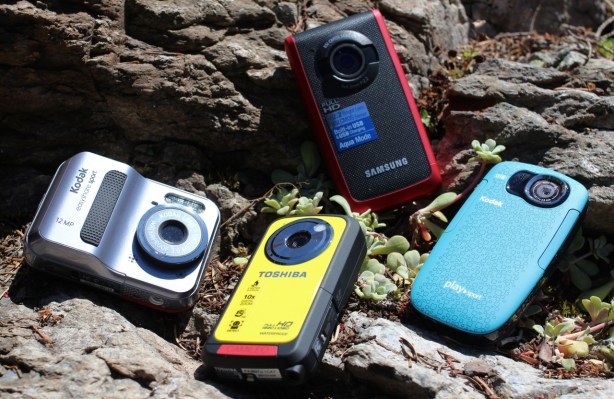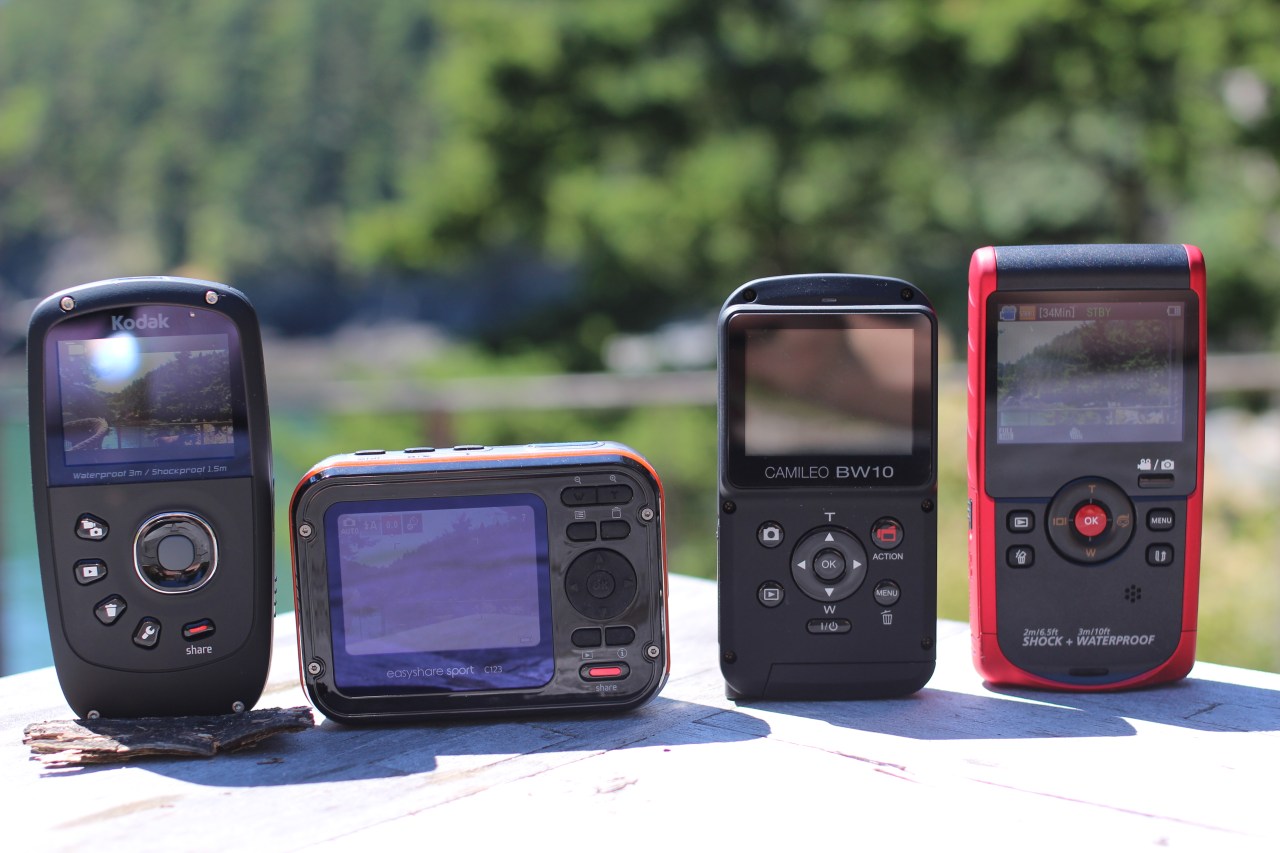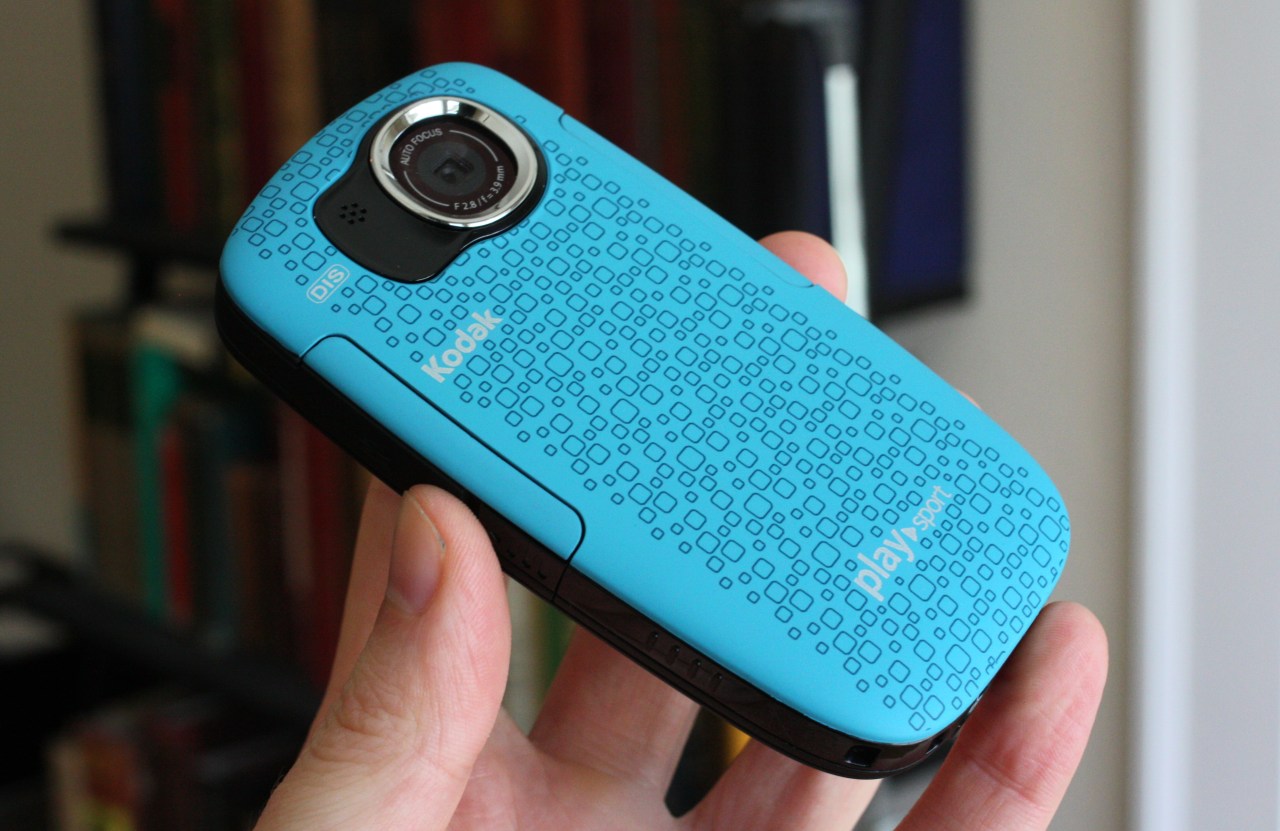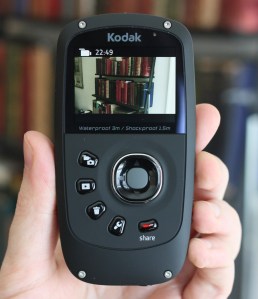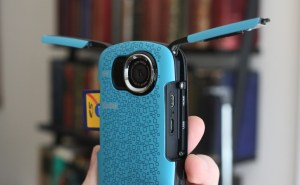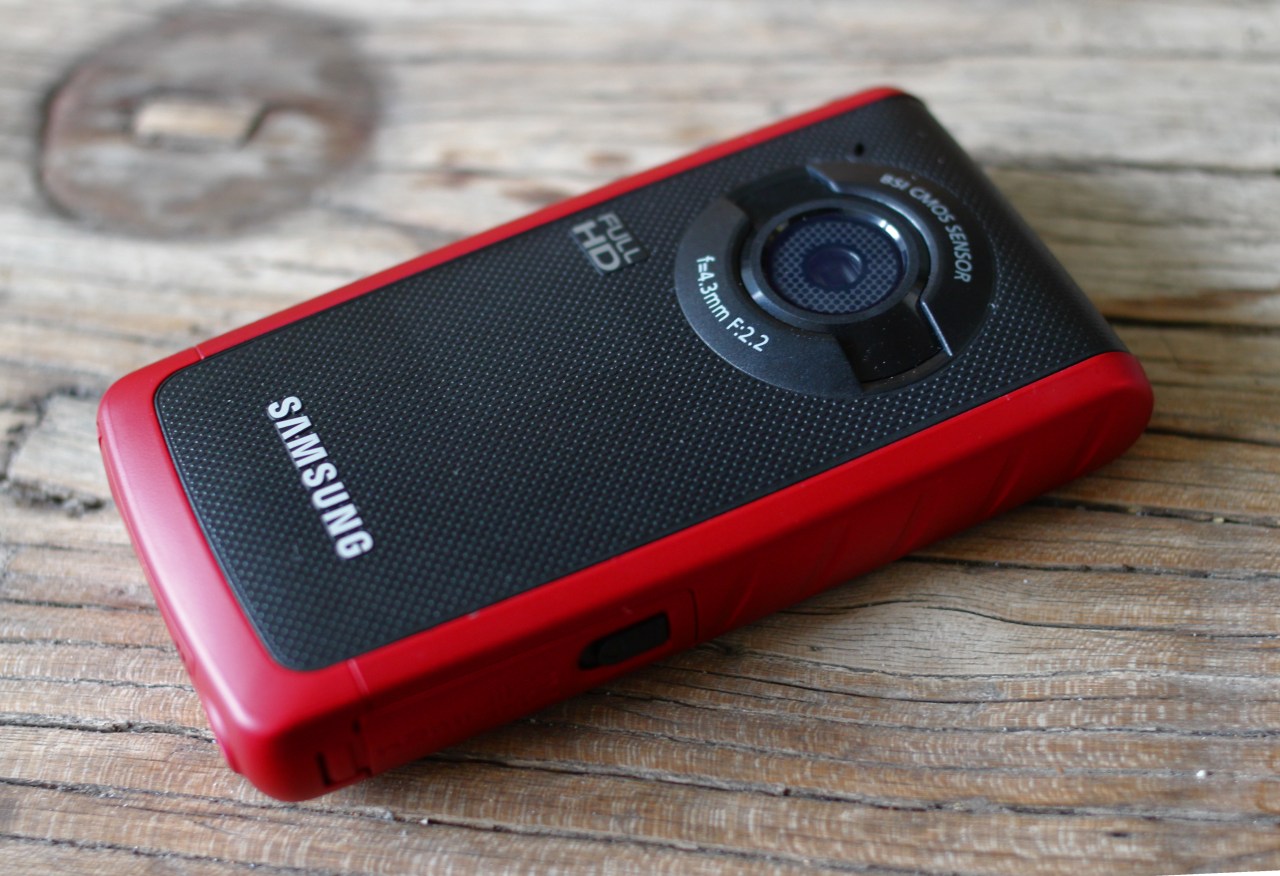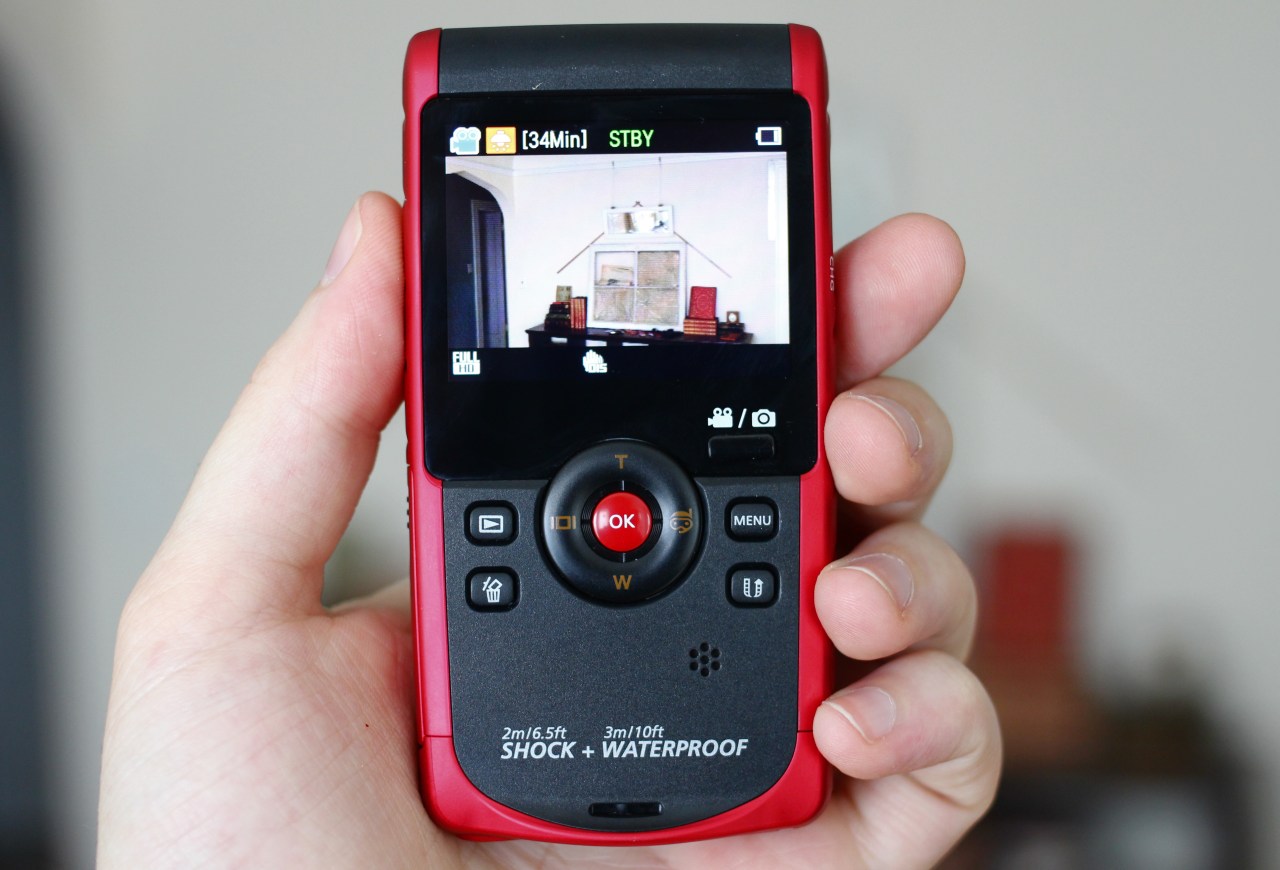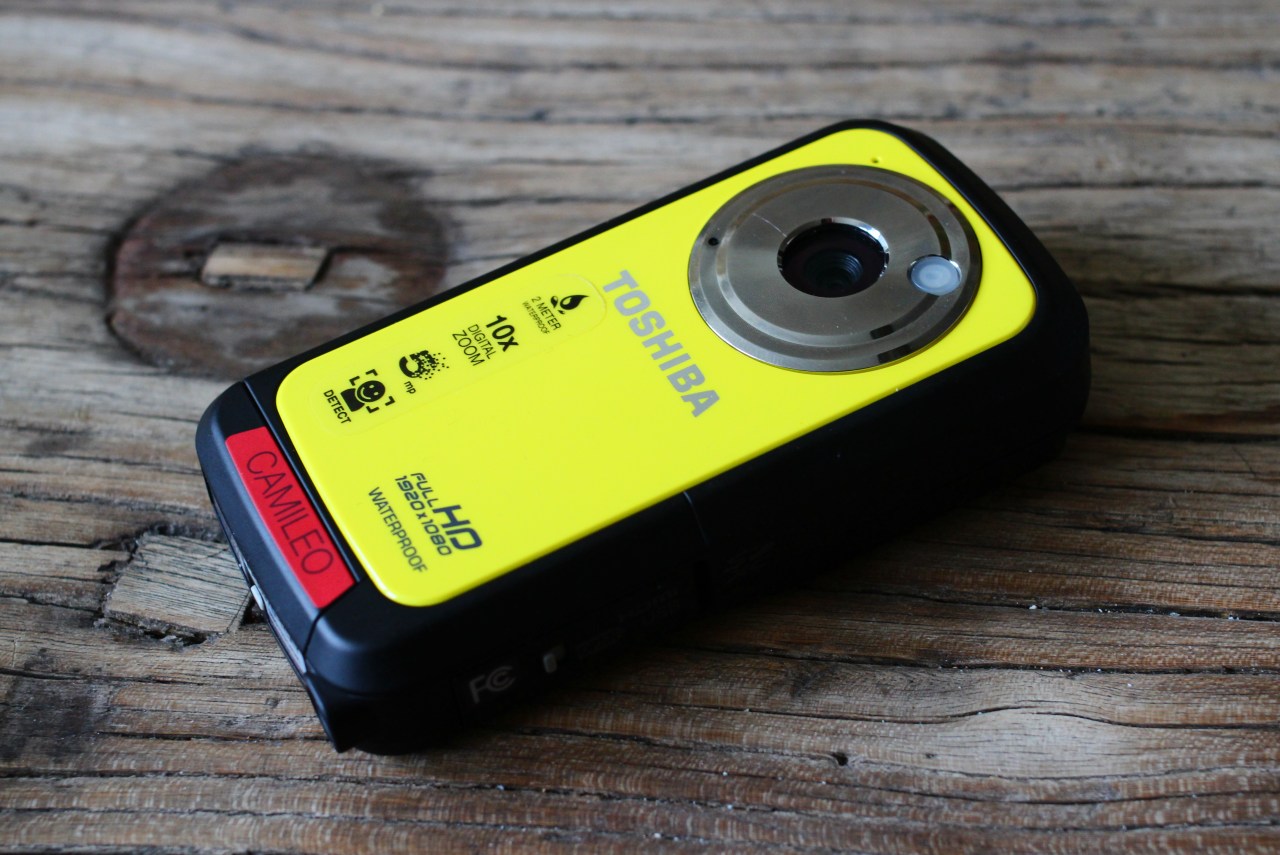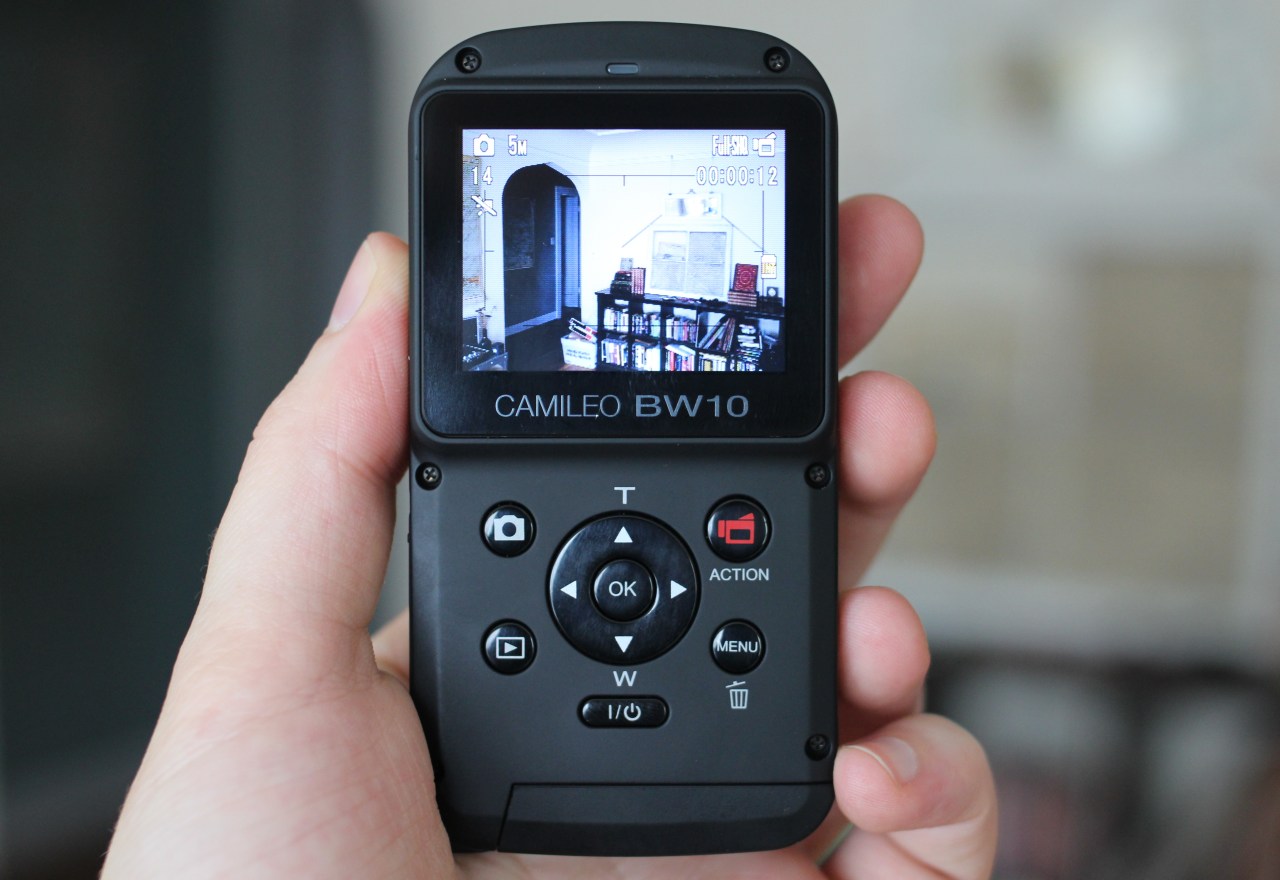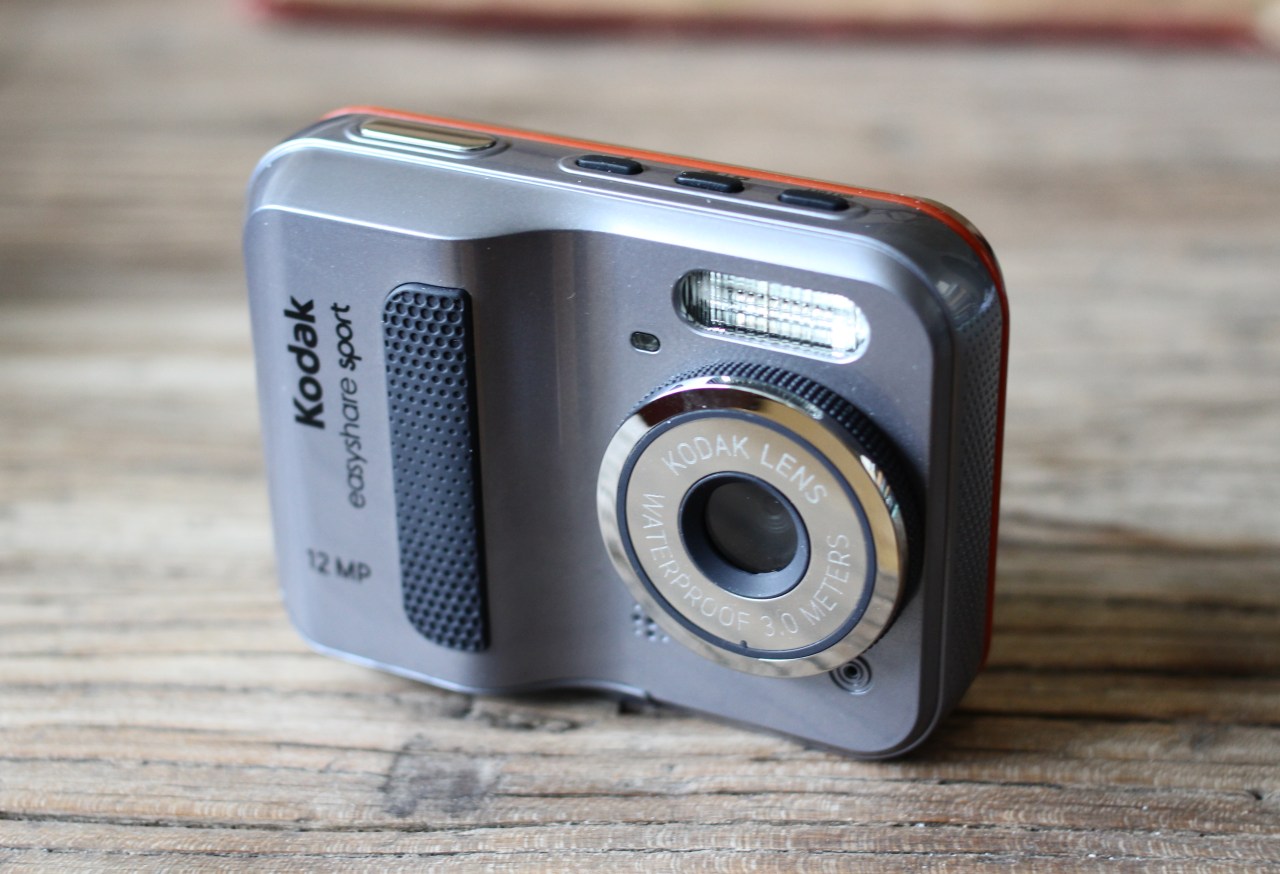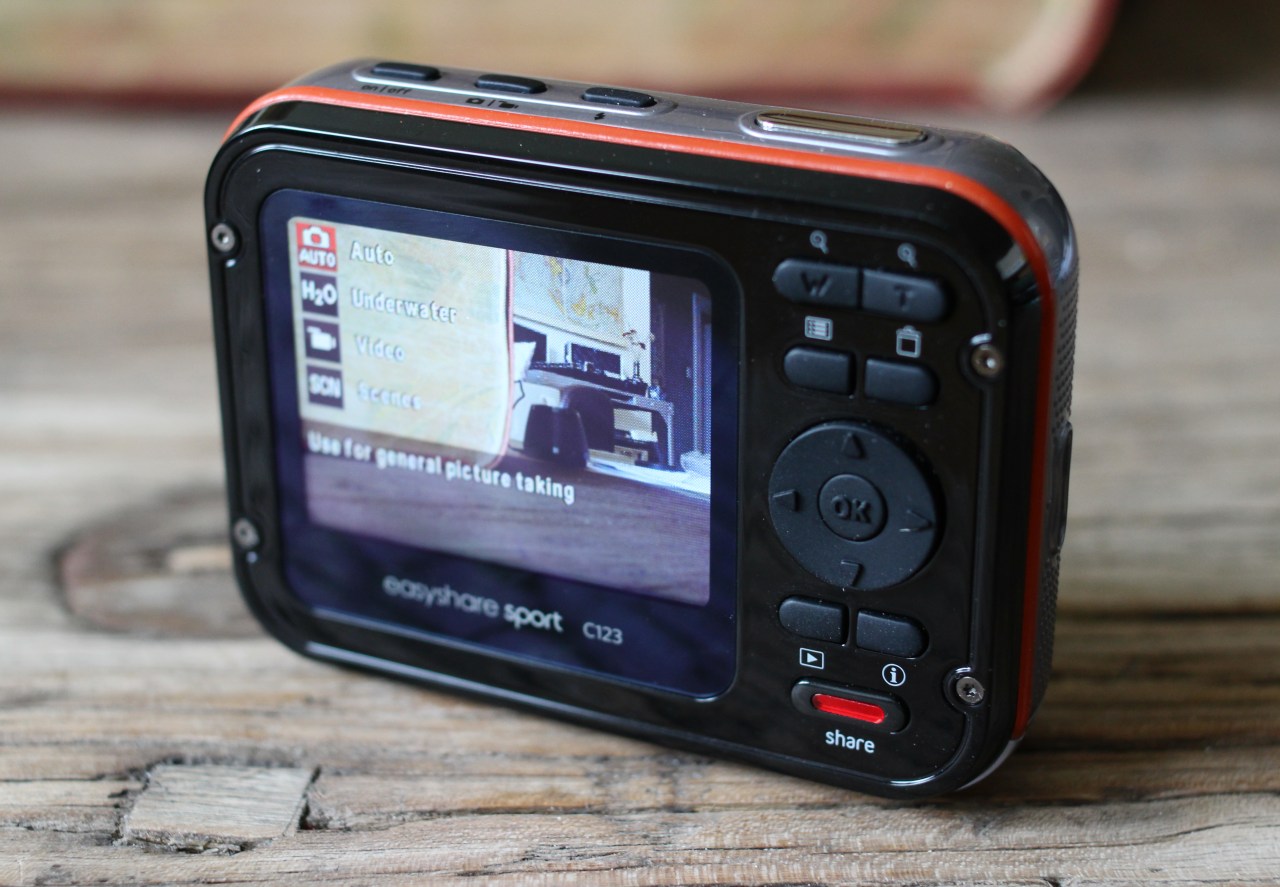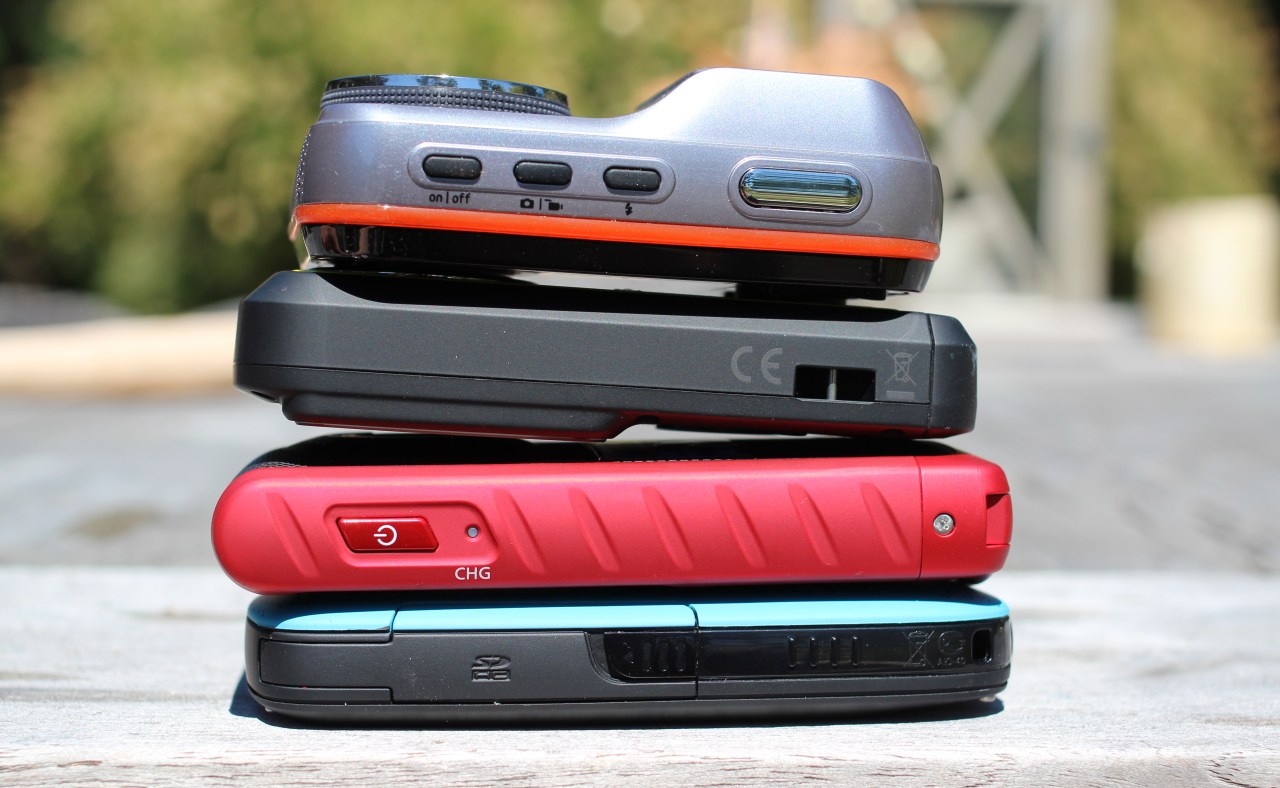Summer is here, and there’s a good chance some of you are thinking of picking up something to document your vacations with. iPhones and point-and-shoots are all well and good, but if you want to take it to the pool or the beach, it’s nice to feel sure that an errant splash isn’t going to disable your camera permanently. We’ve got a few water-hardened Flip-esque pocket cams here for you to choose from, but which deserves your hard-earned cash?
I’m not including image samples because to be honest, all these cameras have tiny sensors and small, weak lenses, which combine to produce noisy images with poor sharpness and so on. But they’re cheap and vacation-proof (i.e. immune to trips in shallow water, sand and dirt, and short drops). You can’t have everything.
Here they are, in no particular order:
Pros:
- Nice hand-feel
- Wide angle lens
- Extra video options
Cons:
- Sluggish menu
- Small LCD screen
- Easy to accidentally open port doors
I liked the old Playsport, and the new one seems to be an incremental improvement. It’s more compact, and has an ostensibly ergonomic layout — for right-handers, at least. There’s less of a plastic-y feel than the other devices and personally I think it looks the best. It’s much heavier than Samsung’s similarly sized BW10, but the shape is better.
There are several extra video options: in addition to 1080p/30, there’s 720p at 30 and 60 fps, and a WVGA (640×360) mode for more manageable file sizes and SD playback. Navigating the menu is an exercise in patience, however; the d-pad is stiff and moving between selections is slow. The LCD, while small, is easily the sharpest of the cameras.
I found it was a bit too easy to open up the areas where the device’s ports are. A simple slip of the hand (or a could pop open your SD door and in goes the sand. The other cameras have significantly more security in this area.
Pros:
- Image stabilization
- Spring-loaded port doors feel secure
- Biggest LCD of the bunch
- Multi-take, single-file recording
Cons:
- Somewhat large
- Ugly, if I’m honest
- Only two video modes
- Built-in USB plug questionably convenient
The W200 is easily the biggest of these devices. It’s still fairly small, of course, but it feels more bulky. It also feels nice and solid, and that feeling extends to its port doors, which are too easily opened on the Playsport and too fiddly on the BW10. The W200’s doors are spring-loaded and open only with effort — but the good kind of effort. They open when you want them to.
The screen is the biggest of the lineup here, not by much, but it’s worth mentioning. The extra space is used to display info in black bands above and below the picture. The menus are attractive and quick to navigate. The d-pad feels stiff but actually responds very well. Unfortunately the middle button is very deep, as it is used in photo mode to set focus, and you have to press it in quite a ways to make a selection. Not a truly substantial issue, but it bothered me. There’s a flip-out USB plug at the bottom, which is handy if it works for your setup, and a pain if you’d just rather have a port to plug a cable into.
There are only two video modes, 1080p/30 and 720p/30, which is too bad. It has the admirable ability to “pause” the recording without creating a new file, which will be welcomed by many who don’t feel like editing after the fact. It felt better taking still pictures than the others, the camera-shaped Easyshare Sport included.
Also it just about gave me a heart attack suddenly making a droplet noise for its auto-off procedure. You can turn that off.
Pros:
- Compact
- Nice clicky controls
- Straightforward to use
Cons:
- What’s with the field of view?
- Extremely slow aperture response
- Must use fingernail to open port door
The BW10 is the simplest to operate of these devices, all of which are pretty simple to operate. But the BW10 is ready to take a picture or video at any moment, and you can take pictures while you’re taking video. The LCD has two modes, one showing just what you record and one showing the whole picture with guidelines showing what the camera will actually record.
Wait, what?
Yes, apparently Toshiba felt that instead of recording everything it can see through the wide-angle lens, the BW10 should cut off the edges and only record the middle. Anything outside the boundary of the box won’t be recorded – even though it’s there. What the hell? I’m pretty sure I’m not mistaken about this, and it’s just a really dumb limitation.
The BW10 also takes a long time to recover from lighting changes. Going from outdoors to indoors, the shot will be dark for several seconds while the camera ratches open the aperture. It takes a long time and actually also affects the cast of the image, going from warm to cool as the aperture opens.
The port doors are very secure — too secure, I might say, since the tiny switch you need to hit can’t be done easily with a finger. Not a big deal really, but it’s annoying that opening the door should be a precision action.
Pros:
- Shaped like a camera, if you like that
Cons:
- Always starts up in still shot mode
- No video options
- Poorly placed USB port
The Easyshare Sport is more of a budget point and shoot that happens to be waterproof, but it seems to fit in with these guys more than other point and shoots. The trouble is it’s just not very good. There’s a big grip in which fit the AA batteries that power it, but the shutter button isn’t on top of it, where you’d expect it to be. The control layout is a bit arbitrary overall. Why aren’t the zoom buttons mapped to the D-pad, for instance? Why is the D-pad so small, and the center button so hard to hit, that I end up hitting every direction at once when I try to select a menu option? Why isn’t video next to “auto” in the mode select? The whole thing gives an impression of being thrown together with no design at all.
The quality isn’t impressive, either. It looks like it has a real lens but it’s more or less a pinhole, like the rest of these cameras (which also go to some length to make it look like they have real, round lenses), and its slowness shows in the choppiness of the image on the LCD. Even in a well-lit room the image was dim and jumpy. There is only one video mode (two if you count underwater, but I don’t) and I don’t trust it.
To get at the USB port you have to open the bottom panel where the batteries and SD card go, and it’s a pain in the first place. No grip and having to press in two directions at once means if your hands are wet, forget about it. Not really user-friendly.
Our pick
The Toshiba makes too many compromises, and I wouldn’t pay a dollar for the Easyshare Sport. So it’s between the W200 and the Playsport. Here’s how it breaks down in my opinion:
Playsport
- Sharper, more accurate LCD
- More video modes (60fps can be used as slow-mo)
- Wider lens
W200
- Bigger LCD
- Superior video quality (though it’s still not that good)
- Handy features like image stabiliztion and record-pause
I can’t tell you which is the best choice for you. If I absolutely had to choose, I’d go with the W200 simply because the end product is better — none of these cameras produces good images, but the Playsport was significantly less sharp in images and video. They have the same MSRP, so think hard about what part of the camera is important to you and make a choice based on that.
